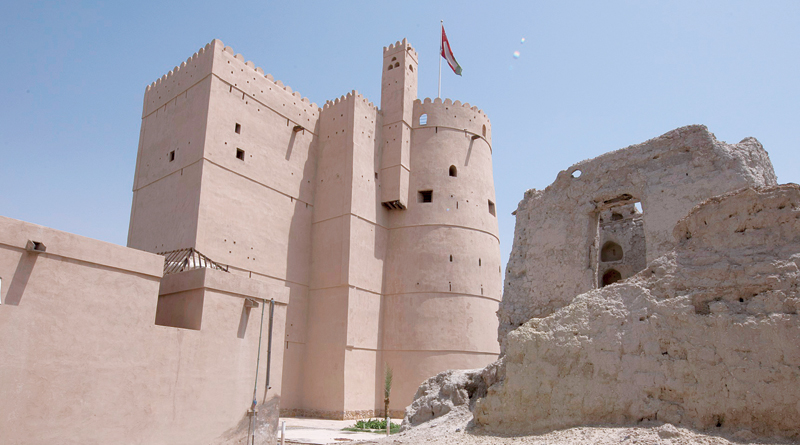

TEXT & PHOTOS BY YAHYA AL SALMANI -
Al Fiquain Fort is located in the village of Al Fiquain in the Wilayat of Manah. It was built by Shaikh Masoud bin Mohammed bin Suleiman al Busaidi in 1617. Several researches said that this fortress is a classic example of traditional Omani military architecture.

The castle was built in two phases. The first part was allotted for the domestic purposes. This section was the home of Shaikh Masoud and it consists of four floors, comprising rooms, a library and stores.
The fort is surrounded by ancient houses built of mud and stones. From the top of the fort, one can observe the green oases with date palms and many other trees.
The second part of the fort was built for defence. Omani manuscripts indicate that “the Omanis built this fortress in order to fortify the area from any sudden military attack”.

Strangely enough, the castle has a rope hanging from the second floor. “This was the main entrance, and only the climbers are able to enter the castle. During the restoration process, a door was added to make it easier for visitors to enter the castle”; Abdullah al Mahrouqi, a tour guide at the fort, told the Observer.
It also has two prisons. The main one is called “Matmarah”. It was built 20 meters below the ground. This area was used to punish hardcore criminals. The second jail is rather smaller and was used for detention.
The castle has a well up to seven meters deep, used for drinking and household purposes. The castle also has stores for dates and cereals. However, the vital water source for the fort is the falaj irrigation which runs for around 7 km from ‘Jaba Wadkah’. This falaj is classified in the “Dawoodi Category”, Abdullah said.
The citadel was restored by the Ministry of Heritage and Culture in 1994 during the Sultanate’s celebration of the Heritage Year and opened for public in 2011. The fort receives hundreds of visitors each day from all over the world.
Oman Observer is now on the WhatsApp channel. Click here



